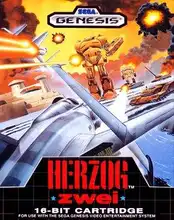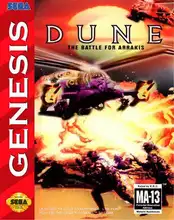The rhythmic clack-clack-clack of infantry marching, the low hum of harvesters gathering precious resources, the sudden, heart-stopping alert that your base is under attack – these are the sounds that defined countless hours for a generation of PC gamers. We're talking about the glorious era of Real-Time Strategy (RTS), a genre that demanded quick thinking, strategic planning, and often, a caffeine IV drip.
Forget turn-based waiting; RTS games threw you into the fire, forcing you to manage an economy, build up an army, explore the map, and outthink your opponent all at once. It was a thrilling, often chaotic, dance of resource management and military might that captivated players throughout the 90s and early 2000s.
What Exactly IS Real-Time Strategy?
At its core, a Real-Time Strategy game is about making strategic decisions and executing them continuously, without the pause of turns. Think of it like commanding a battle from a bird's-eye view, but the clock never stops ticking.
The key elements typically include:
- Resource Gathering: Collecting materials (like Ore, Tiberium, Gold, Vespene Gas) to fund your operations.
- Base Building: Constructing structures to train units, research upgrades, and defend your territory.
- Unit Production: Training various military units, vehicles, and aircraft.
- Exploration: Uncovering the map to find resources, scout enemies, and plan attacks.
- Combat: Engaging enemy forces, managing troop movements, and using unit abilities strategically.
- Simultaneous Action: Everything happens at once for all players, demanding multitasking and quick reactions.
This blend of economic simulation and tactical combat, all under the pressure of real-time, created a unique and addictive gameplay loop.
The Titans of the Golden Age
While the genre has roots stretching back further (shoutout to Dune II!), the late 90s and early 2000s saw RTS hit its stride with a string of legendary titles.
- Command & Conquer Series (Westwood Studios): From the original Tiberian Dawn to Red Alert, C&C brought cinematic flair, distinct factions (GDI vs. Nod!), and iconic units. Who could forget the Mammoth Tank or the Tesla Coil?
- Warcraft Series (Blizzard Entertainment): Starting with fantasy battles, Warcraft: Orcs & Humans and Warcraft II: Tides of Darkness built the foundation for a massive universe, introducing hero units and distinct racial abilities that would become genre staples.
- StarCraft (Blizzard Entertainment): Arguably the king of competitive RTS, StarCraft perfected the asymmetrical balance between its three unique races (Terran, Zerg, Protoss), leading to decades of professional play and dedicated fans.
- Age of Empires Series (Ensemble Studios): Taking RTS through historical periods, Age of Empires added layers of civilization development, ages of technology, and unique national units, blending history lessons with epic sieges.
These games weren't just popular; they shaped the genre, introducing mechanics and design philosophies that are still felt today.
Why We Still Love Them
Beyond the technical aspects, what made these classic RTS games so enduringly popular?
- Strategic Depth: Easy to learn the basics, incredibly deep to master. Optimizing build orders, micromanaging units, and predicting enemy moves offered endless strategic possibilities.
- Base Building Satisfaction: There's a primal joy in turning a small construction yard into a sprawling, fortified base bristling with defenses and production facilities.
- Multiplayer Mayhem: Battling friends (or strangers) over local networks or early online services was the ultimate test of skill and strategy. The tension of a rush or the relief of holding off an attack was immense.
- Memorable Units & Factions: Each game had units and factions with distinct personalities and playstyles, making you pick favorites (Are you a GDI engineer rusher or a Zergling swarm enthusiast?).
Bringing Back the Classics
Feeling that nostalgic pull? The good news is that many of these classic Real-Time Strategy games are still accessible today.
- Digital Storefronts: Services like GOG.com specialize in DRM-free classic games, often pre-configured to run on modern systems. Many classic RTS titles are available there.
- Emulation: For older DOS-based games, DOSBox remains an essential tool, allowing you to recreate the environment needed to run games from the 80s and 90s.
- Remasters & Collections: Companies have released updated versions or collections of their classic RTS libraries, offering modern compatibility and sometimes graphical enhancements (like the C&C Remastered Collection).
Revisiting these games is a fantastic way to appreciate the roots of the genre and experience the intense, real-time action that defined PC gaming for a generation.
The Legacy Lives On
While the RTS landscape has changed, the core principles live on, influencing genres from MOBAs to tower defense. But for many retro gamers, nothing quite captures the magic of commanding pixelated armies, managing every detail of your burgeoning empire under pressure, and hearing that sweet, sweet sound of victory (or the crushing sound of defeat).
The golden age of Real-Time Strategy might be in the past, but the memories, and the games themselves, are far from forgotten.
FAQ
Q: What does RTS stand for? A: RTS stands for Real-Time Strategy.
Q: What are the key elements of a classic RTS game? A: Key elements typically include resource gathering, base building, unit production, map exploration, combat, and simultaneous action where everything happens without turns.
Q: Can I still play classic RTS games today? A: Yes! Many classic RTS games are available on digital storefronts like GOG.com, or can be played using emulators like DOSBox for older titles. Some have also received modern remasters.
Q: What were some of the most influential classic RTS games? A: Iconic titles include Dune II, Command & Conquer, Warcraft, StarCraft, and Age of Empires.


